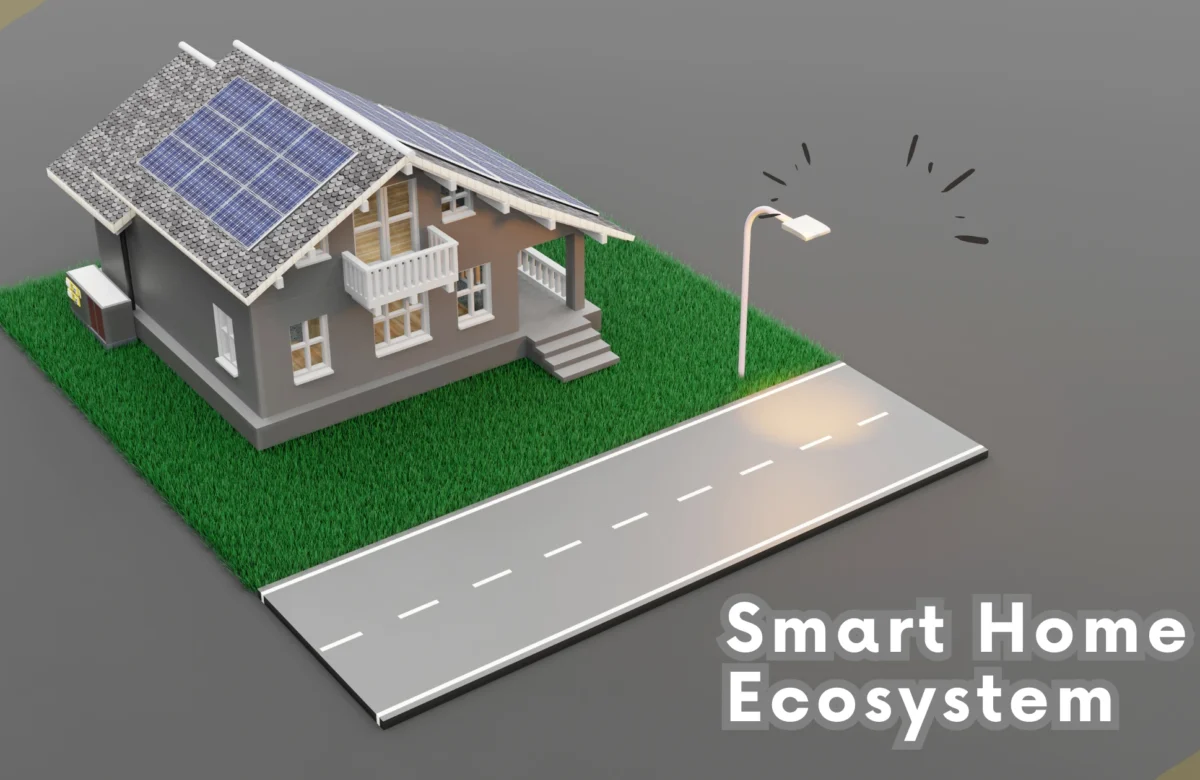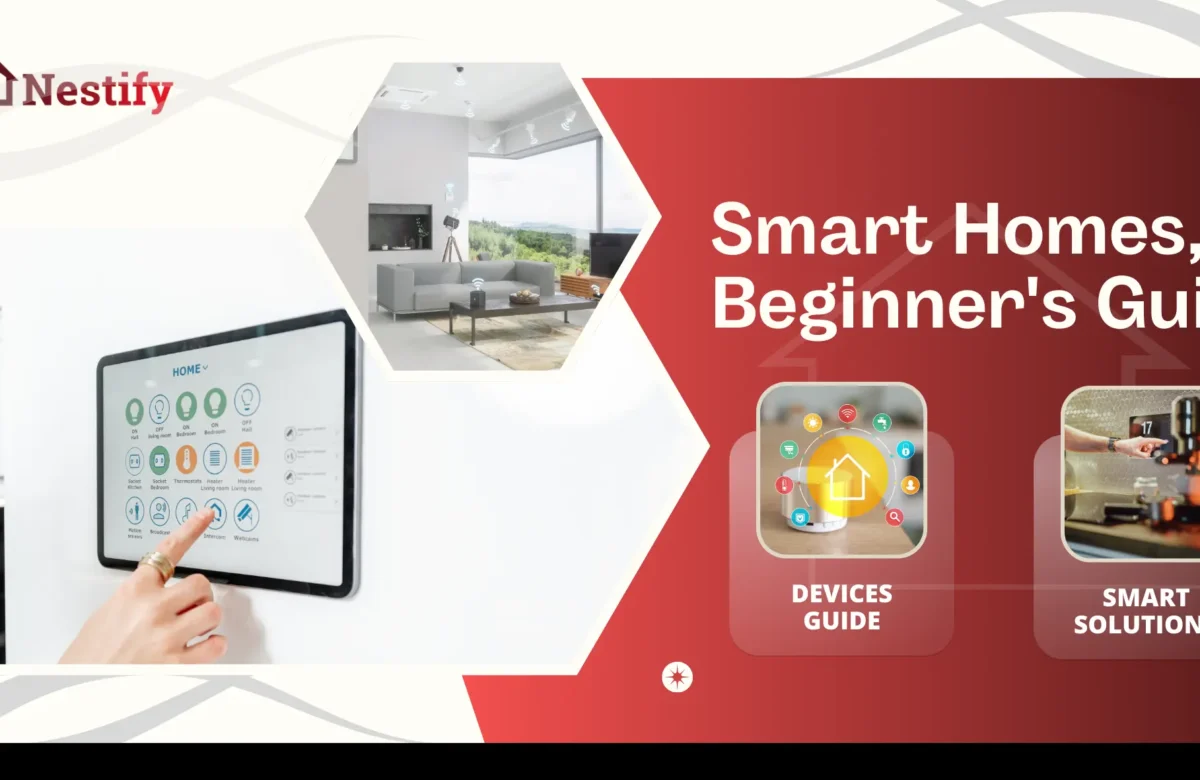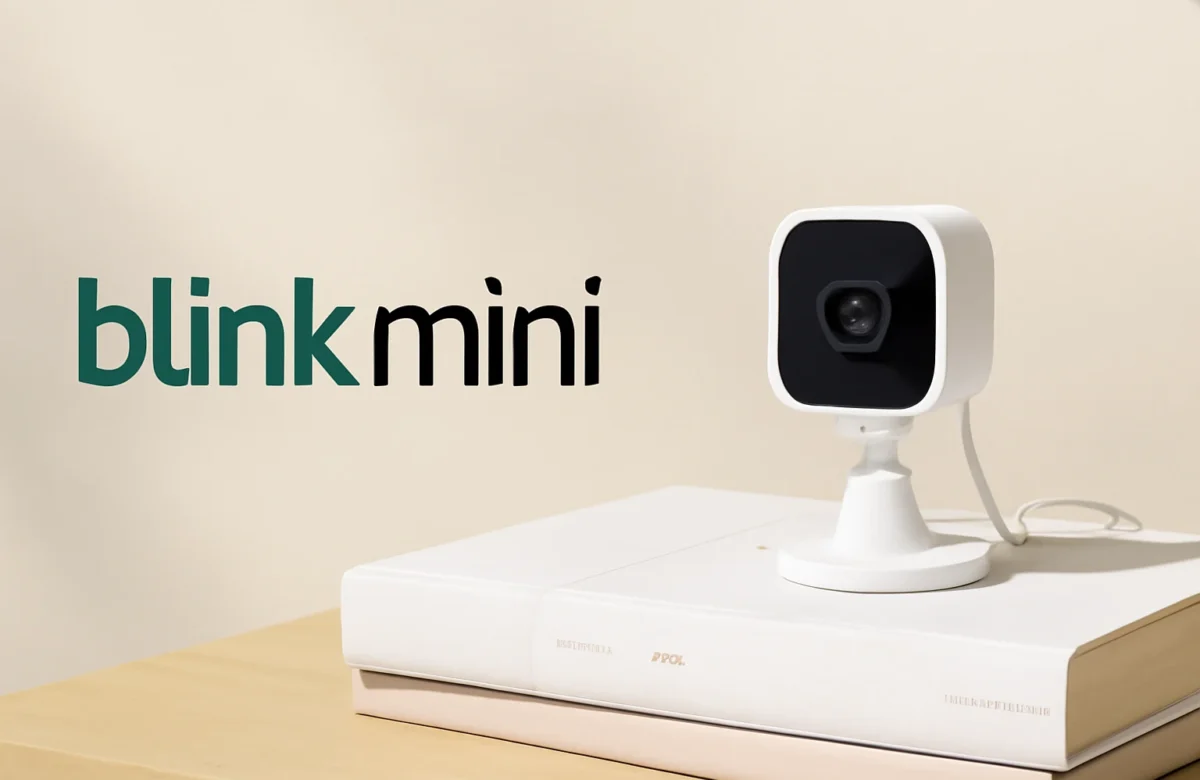The Best System for Smart Home Energy Management
- March 24, 2025
- No Comment
- 345
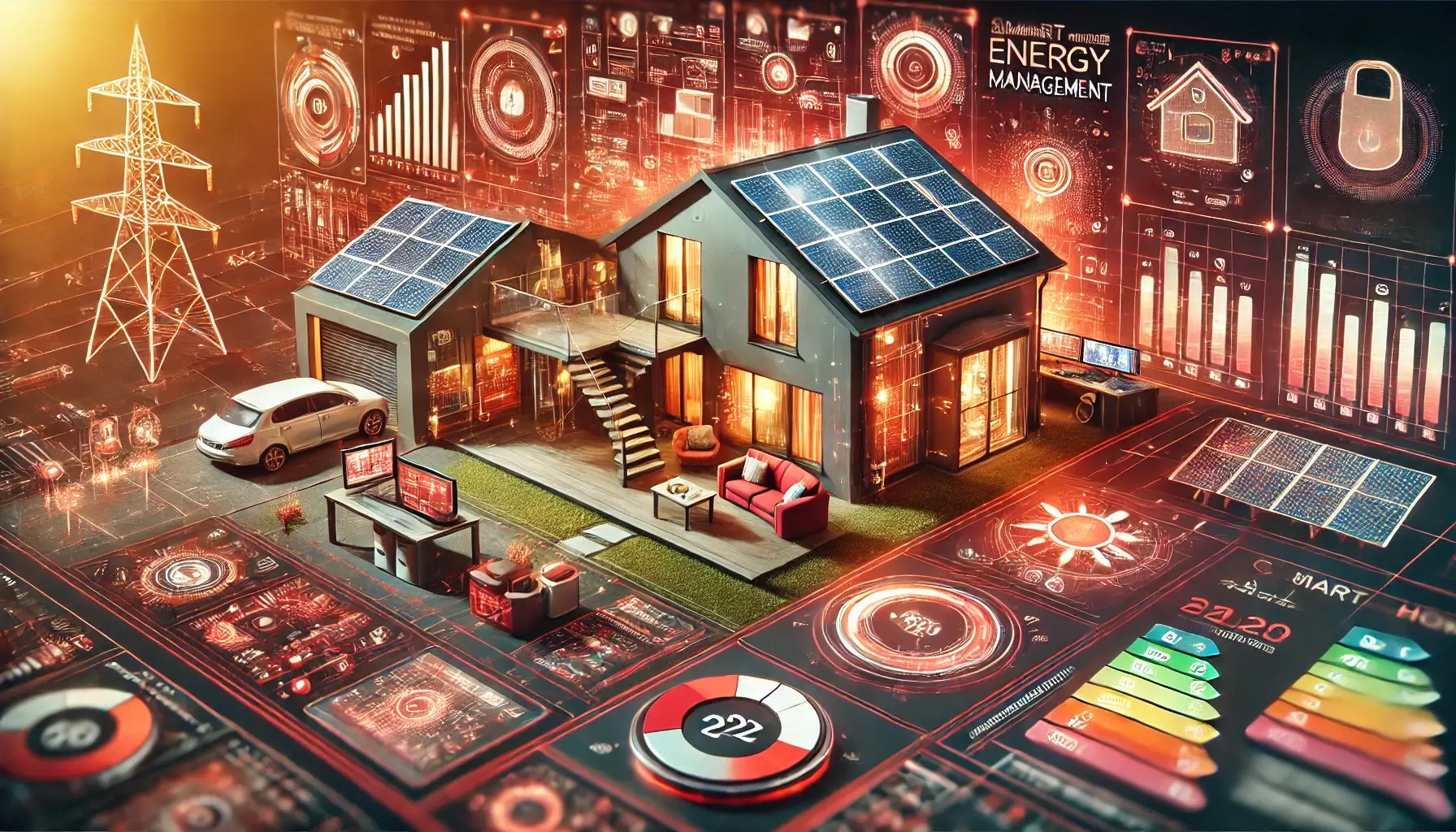
Smart Home Energy Management
Would you like to make a negative impact on the environment and still reduce your energy expenses? The development went on too long. The time has come for smart home energy management.
Technology to see the light of day for some. Smart home solutions and technology can assist you in returning the Earth’s energy back to the planet as well as improving your income. So come along with us as we explore this amazing technology.
The traditional household uses a significant portion of their energy at a rate of 8%-9%, but some can lower the waste to 3% which at times goes up to 6%. This is possibly the mind-blowing part of smart home technologies individuals can save up to 30% of the energy spent. This can cause some changes.
Imagine being in control of the energy consumption of your home right from your mobile device among the home devices that will customize themselves to your liking, include-wise thermostats to the ones lighted by themselves. We will analyze these technology achievements, some great and some really amazing, in the light of their ability to make a part of your solar house intelligent and, by extension, an energy-efficient not only source but also a storage spot during low load hours.
This complete guide will walk you through the following:
- The latest and most efficient smart home energy management by smart devices
- How to execute strategies in mere steps
- The amount of your budget the new and improved technology optionally can potentially save for you
- How the environment will benefit if you use smart home automation
Do you want to know the secret to changing your home’s energy from trash to treasure? The magic phrase is ‘Let’s just go deeper’.
Key Takeaways:
- – A smart thermostat and climate control system allow you to set the temperature of your home to 20-25 degrees Celsius when not at home and automatically turn the heater back up when it is almost time to get back home. Low energy consumption can thus be the end product.
- – Energy Star-certified intelligent electronics and devices form the basis of a productive home energy management system through which you make significant and obtain optimal benefits.
- – A smart lighting solution that incorporates sensors and controllers will automatically turn off lights in a room when no one is in it, therefore minimize the energy consumption and keeping you comfortable and convenient.
- Metering of water through smart leakage sensors and control devices could save resources and cut down the overheads.
- By using smart plugs and implementing energy monitors, one can manage energy
Smart Home Energy Management Systems Explained

The key idea behind smart home energy management systems (SHEMS) is they are intelligent networks that connect and control various energy-consuming devices in your home. These systems function together as a well-coordinated orchestra to save energy, get rid of waste, and empower the consumer in their decision-making process by offering essential insights.
How SHEMS Work
These high-tech sets require a network of sensors, smart IoT devices, and rules to observe and control energy consumption to make sure it does not exceed the specified level. They grab the energy consumption patterns of your place and analyze it, so they make the necessary adjustments to the energy efficiency by the help of automation while the room’s temperature stays the same.
Core Components
– Smart Thermostats: The core of the entire system, which regulates heating and cooling.
– Energy Monitoring Devices: The devices that can indicate in real-time how much power is being used at the moment throughout your house
– Smart Plugs and Switches: The smart devices allow the user to control the power of home appliances, and therefore, stand-by power waste will no longer be an issue.
– Connected Lighting Systems: Ideal solutions to automate lighting according to the occupancy and the light coming through the windows
– Mobile Apps: These can be used for remote operation and to obtain precise energy consumption breakdowns
Benefits of Implementation
A SHEMS has many earnings from both your purse and the environment. Find that if the systems are properly set up, they can decrease energy by 15-30% on average every year. They help you see your usage habits more clearly. This is very crucial for you to detect the bad ones: energy-consuming devices and irrational habits that lead to waste of energy.
Integration Capabilities
The modern SHEMS can be harmonized with various smart home products:
– Smart appliances
– Solar panel systems
– Battery storage solutions
– Electric vehicle chargers
– Water management systems
This networking allows all your house’s systems to cooperate with one another so you can save the most energy. The system is able to spontaneously adjust the settings according to the time of the day, the presence of people, the weather, and the energy prices.
💡 Key Takeaway: Smart Home Energy Management Systems are smart devices combined with real-time monitoring and an automation process that allow optimal energy usage. This innovation can lead to up to 30% less energy consumption without compromising comfort and convenience.
Core Components of Smart Home Energy Management
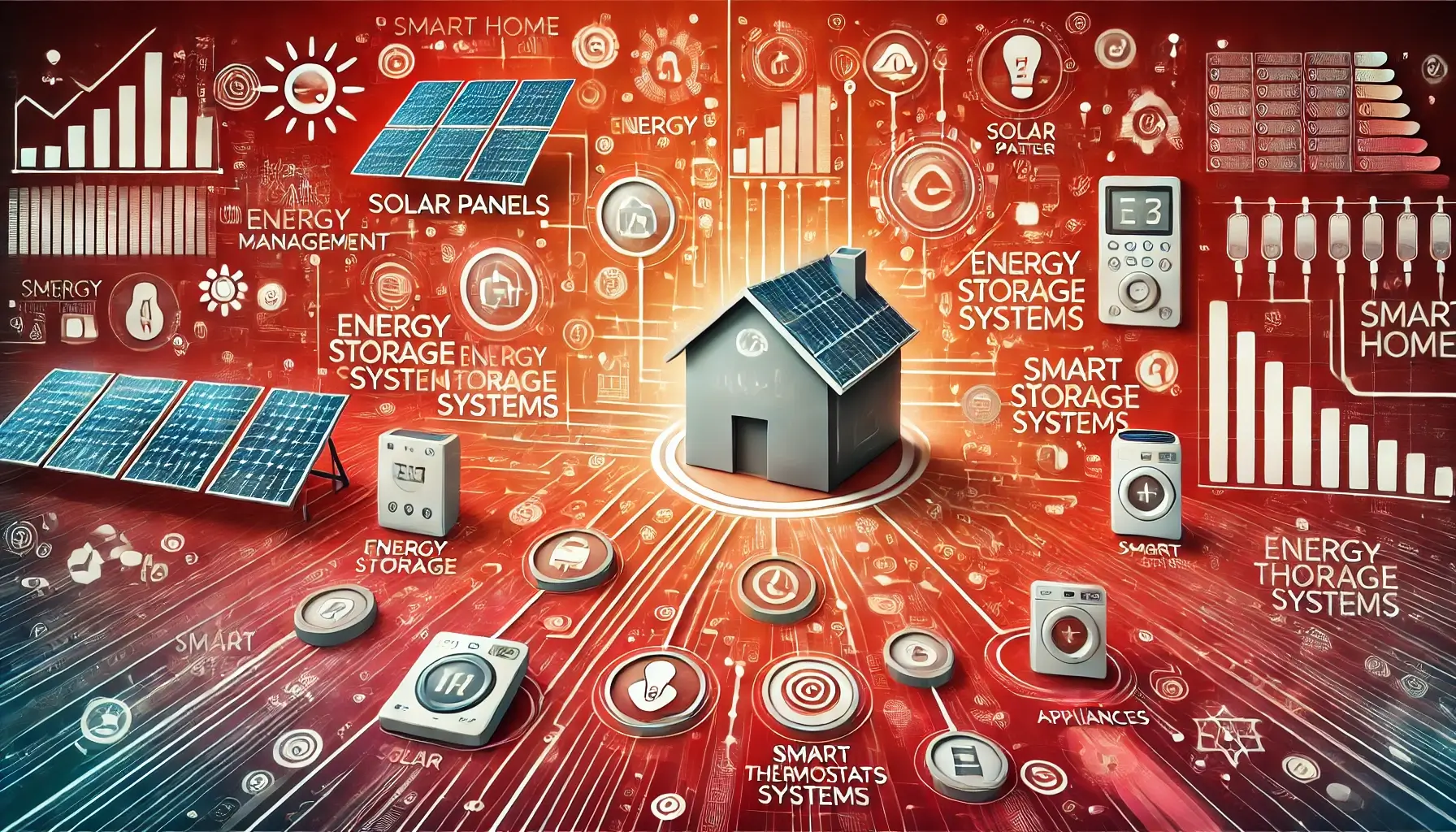
Smart Thermostats: The “Controlled By” Part of Energy
Smart thermostats are the brains of the home energy management system as they regulate the energy consumption for the entire house. These smart devices are smart enough to remember your habits and then automatically adjust the temperature based on your desired comfort level and at the same time, save energy. They create their schedules by observing the occupancy status and the weather conditions of the house, which in turn can lower the respective bills by as much as 15%.
The modern world of smart home technology is full of cutting-edge developments like the Nest Learning Thermostat and ecobee smart thermostat. They are equipped with easy-to-use interfaces that connect to smartphones so you can manage and control the settings remotely. Besides, they offer such extra benefits as the possibility to see the energy reports in detail, which will help you understand more the usage of electricity and find the areas for improvement.
Connected Lighting Systems
When it comes to lighting, it is reported that about 15% is used in an average home. Smart lighting solutions are based on the use of LED technology with automated controls to save energy drastically. In this case, the systems allow you to create planned activities, use motion sensors for automatic shutoff, and adjust the brightness of lights according to the available natural light.
Superior attributes such as geofencing that automatically switches off lights when you leave home and welcomes you with perfect illumination are guaranteed by the most advanced solutions. Alongside wireless air conditioning systems, voice assistants also integrate with the majority of smart light bulbs thus enabling the users to control the lighting through simple commands.
Smart Power Management
The management of standby power consumption is a key factor in the case of energy efficiency. The smart plugs and power strips are very helpful in keeping the vampire drain out of the house. These high-tech power management tools can be programmed to automatically cut power to unused devices during specific hours.
Moreover, sophisticated power management systems are also known to show the precise amount of energy being spent, thus you are better off. Being able to connect with time-of-use pricing systems from your electricity supplier is another thing that the intelligent system will let you do, and it will ensure energy-saving by scheduling the high-consumption activities for off-peak hours.
💡 Key Takeaway: The intelligent processing of power is a must, which is realized through the integrated operation of three main subsystems: intelligent thermostats for climate control, automatic lighting systems, and smart power management tools to operate in an energy-optimized manner to cut the cost of home electricity.
Advanced Energy-Saving Devices
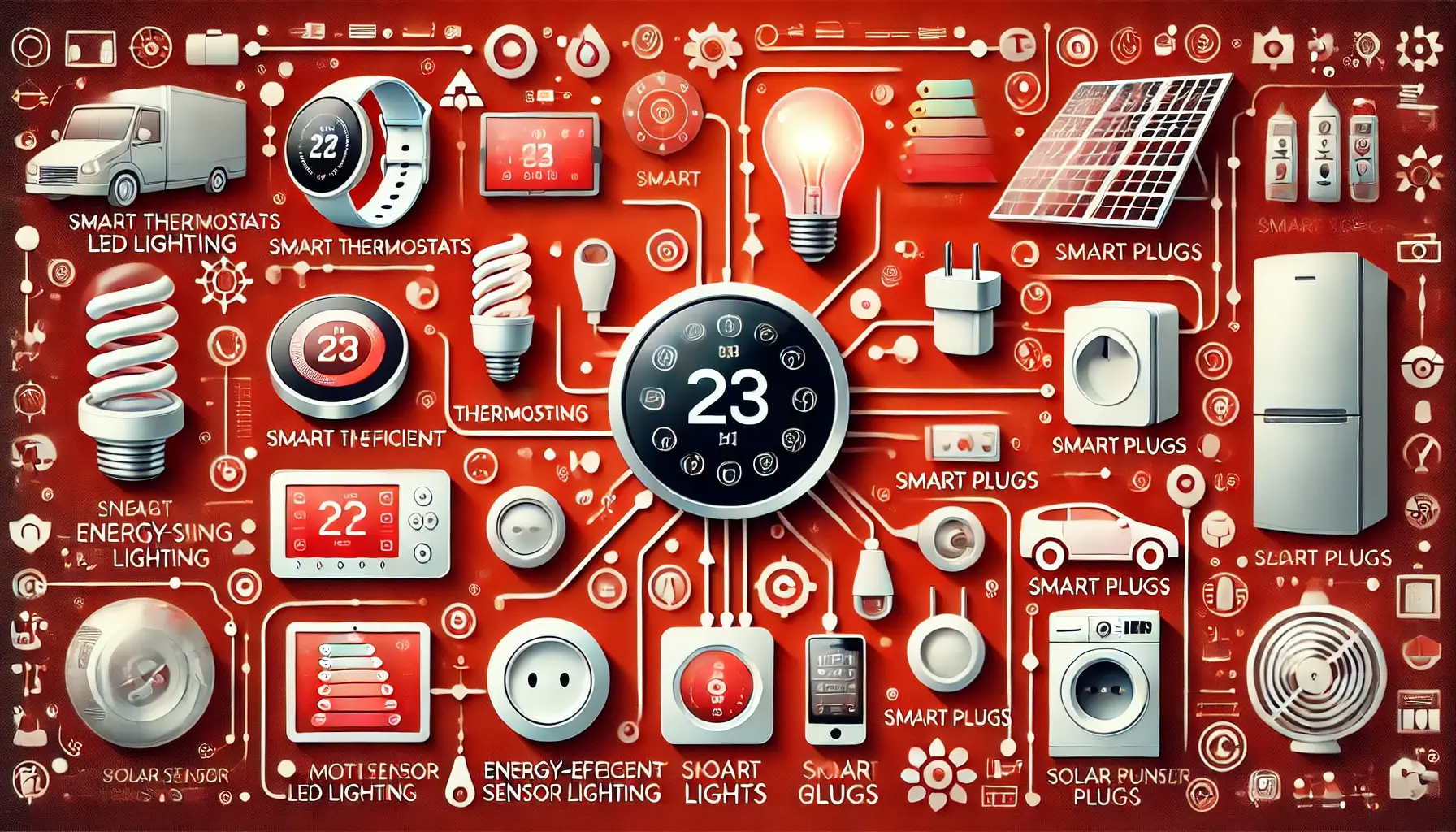
Smart Thermostats: The Brain of Energy Management
Intelligent climate control in smart thermostats occurs by smart systems that identify the preferences of users and regulate the temperatures to the most comfortable yet energy-saving level. They can be smart enough to let them know when their heating and cooling would cost them up to 15% less during the year as they come up with geofencing, through which the system aligns with their moving around and so on.
Both the Google Nest Learning Thermostat and ecobee Smart Thermostat have something unique, which is the technology of computing your everyday schedule and creating your individual scheduling. Besides using the local weather information, they can adjust the HVAC system in advance. Thus, it can work at a high-efficiency level and keep the occupants comfortable. They could even make savings in energy costs by relying on that model.
Smart Water Management Solutions
Energy-efficient devices make up one part of the solution for water preservation and the water conservation business is the other part that succeeds largely. The advanced detection feature of Flo by Moen and Phin Plus can identify leaks that are as tiny as just a single drop per minute, which leads to substantial savings annually, perhaps thousands of gallons of water.
These kinds of products employ smart control algorithms, which monitor not only the flow of water but also the pressure and temperature of it. They will alert the user through an automatic feature to cut the water when they find that the pipes are breaking down thus helping to avoid catastrophic damages and save the owner money. Several models offer even more, with in-depth information on their users’ water behavior, enabling them to ~locate areas with space for further savings.
Smart devices for watering save money when outdoors using real-time weather and soil moisture turning to watering schedules. For one, the Rachio 3 smart sprinkler controller can help save water outdoors by as much as 50% without compromising the visual aesthetics of the place.
💡 Key Takeaway: Energy-saving breakthroughs like smart thermostats and water management systems are gaining popularity alongside bill reduction through the provision of analytics as well as an automatic control option for better efficiency.
Monitoring and Optimization
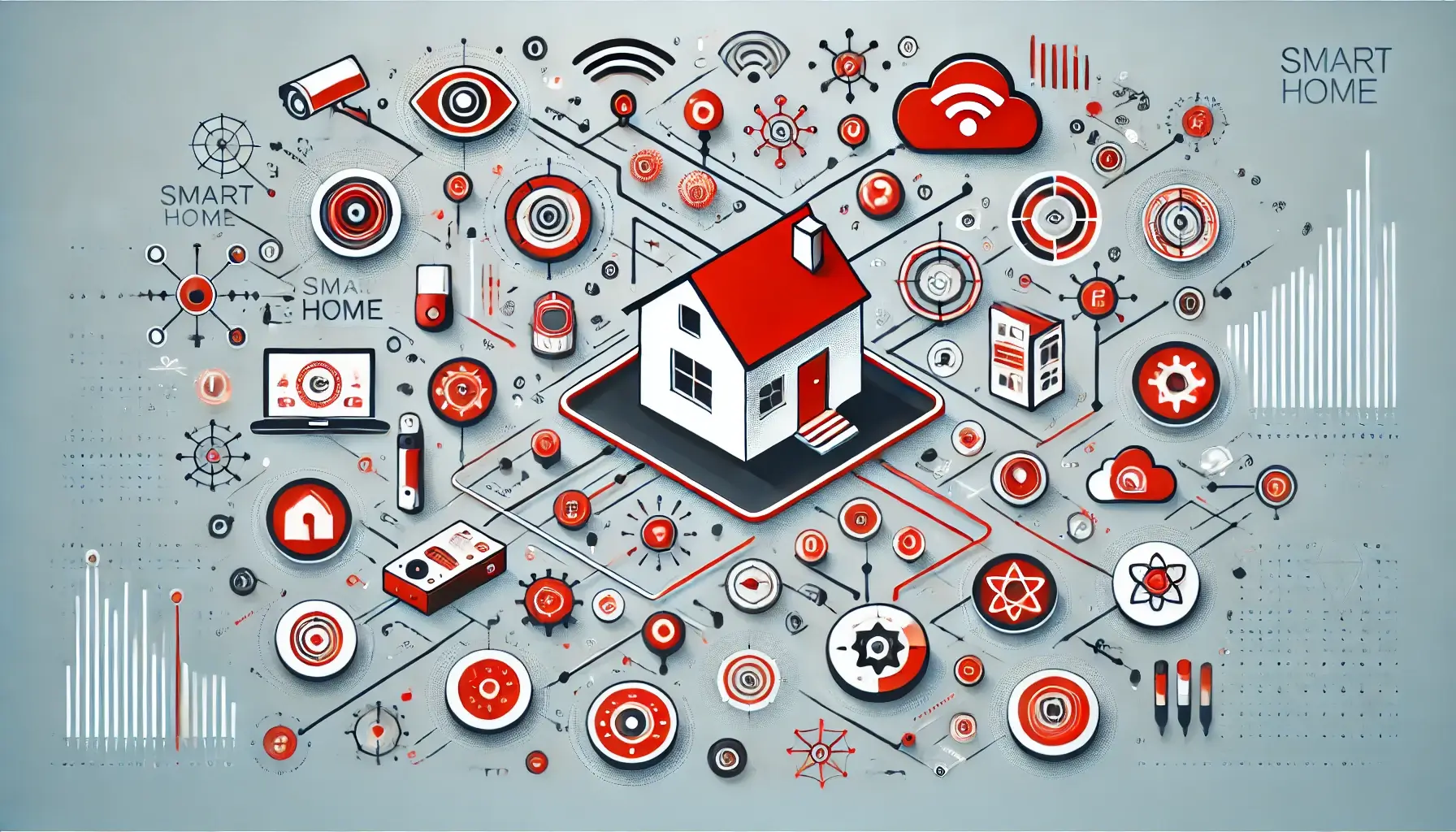
Make sure that the energy use at home is always within the budget by controlling it and improving efficiency. The newest smart home setups allow users to analyze the numbers and thus carry out complete data analysis.
Real-Time Energy Tracking
Modernized energy monitoring systems give you a real-time view of your house’s energy consumption. Apps and web services are your tools for deciding about energy-conservation programs, managing usage data, undertaking energy audits to name a few. A direct connection between power usage and appropriate decision-making is where real-time feedback exists.
Automated Performance Reports
Most smart home platforms generate detailed energy reports that break down the usage of each device, over time, and by season. The conclusions which are derived from the data saved by the system will therefore enable you to understand how you use energy and hence you could get ideas on how to save it. The system can also give you more personalized recommendations based on the findings if you allow it to track your usage patterns.
Smart Scheduling and Automation
Set up your smart home system to handle the optimization on its own. It would adjust the device settings in accordance with your preferences and previous records of use. For instance, the system could dim the lights during the hours with the most sunlight or set the thermostat to the level suggested by the system after the patterns of occupancy are obtained.
Weather-Based Adjustments
Modern smart home systems take into consideration the local weather data in order to use energy more efficiently. Your heating and cooling systems can automatically adjust to the outdoor temperature and humidity, and smart blinds can help manage solar gain throughout the day.
Grid Integration Benefits
Most power companies today offer differentiated rates to homes that have smart energy management devices installed. Such systems can be programmed to save the energy-consuming tasks for off-peak hours, when the electricity rates are low, and that is how you will save money and give the grid a break.
💡 Key Takeaway: Real-time monitoring of smart home devices and automated optimization provides the necessary tools to consume less while maintaining comfort and energy and ultimately save the cost in the long run.
Integration and Automation Strategies
Creating a Connected Ecosystem
Smart home energy management is developed upon the joining of the separate devices. The first thing to do is to select the supporting devices that are compatible with the platform of your smart home system like Apple HomeKit, Google Home, or Amazon Alexa. This will enable all the devices to communicate with each other efficiently and set to work together with the aim of attaining maximum energy conservation.
Setting Up Automated Routines
Introduce automated routines, which will harmonize different technological gadgets. For instance, you can program a “Good Night” routine by means of which you switch off lights, regulate the thermostat, and shut down any unnecessary electronics. You can also use geofencing technology to program your house so that it conserves the energy when you are away.
Optimizing Device Schedules
Your device schedules can be adjusted by you in line with the schedule you keep each day. Operate the smart thermostat in the settings mode to manipulate the temperature so that it adjusts on its own during the period when you go to work, use the smart blinds to light the house during the day, and smart plugs to stop the electronics when they consume more power. When devices are programmed to work together in this manner, the power that is controlled can be used without the house occupants getting uncomfortable in any way.
Monitoring and Adjusting
Utilize the energy usage data collected from your smart home platform to observe the energy consumption trend and find the sections that need improvement. Utilize regular monitoring to make precise changes in your automation solutions and take decisions based on the data about your energy consumption. Some platforms not only show data analysis results but also provide advice to help you improve your system even more.
💡 Key Takeaway: Attaining successful smart home energy management refers to the implementation of well-thought device integration, structured automation routines, and constant monitoring for obtaining energy savings without comfort and convenience trade-offs.
Cost-Benefit Analysis
Initial Investment vs Long-Term Savings
Installation of smart home energy management systems results in the placing of deposit fees, but you will recoup your money in the long run. A smart thermostat, available at a price of between $150-$300, can bring about an average savings of 10-12% and 15% on heating and cooling bills, respectively. Ceteris paribus, this implies $140-$150 in annual savings.
Return on Investment Timeline
With the help of energy-efficient appliances, the majority of smart home devices usually turn out to be a return on investment and eventually pay for themselves in the first 1-2 years.
Admittedly, Smart LED lights cost between $20-$60 for one light but the fact that they use only 25% of the power and last 25 times longer than other lights makes them the most efficient lights that save 75% of the energy. Households that swap 20 bulbs are able to cut their electricity consumption by about $225 yearly.
Hidden Financial Benefits
As a result, the smart home solution became sales-proof with additional financial benefits presented.
It is the fact that smart water leak detectors are priced from $50 to $100 that actually can prevent a situation of the water that has caused costly repairs with the price between $1000 to $4000. Furthermore, to encourage you to get a home that has a smart security system, most likely, you will be given a discount by insurance companies building as much as 5-10%.
💡 Key Takeaway: Smart home management products need a few extra dollars at the beginning, but they bring a return on investment, which includes lower energy and less costly repairs, and even insurance discounts with time.
Implementation Guide
Start with the Basics
Did your energy equipment at a smart home get set up? Start off with simple, high-impact devices that give tangible results. Set your thermostat to a reasonable temperature and turn off appliances with plugs whenever you are not using them; these alone will give you immediate returns.
Create a Strategic Plan
Plot out the energy usage trends in the house & then identify the areas in which the smart technology would have the greatest impact. By doing the first and drilling the holes well, the next thing you do is to install energy-efficient windows and new roof insulation in those bedrooms, the main energy guzzlers.
Integration is Key
Choose smart home devices that work well with each other. Search for products that support main protocols such as Zigbee, Z-Wave, or Wi-Fi. This will guarantee that your devices can communicate correctly and work as one system.
Set Up Automation Rules
Make routines that are programmed off your daily schedule. Set your lights to automatically dim in the evening, the thermostat to change settings for different times of the day, and power to be cut off to devices not in use through smart plugs.
Monitor and Adjust
Avail of your system’s analytics tools to track energy use and identify areas for improvement. On a regular basis, you can run tests to fine-tune your set-up and thus save energy.
💡 Key Takeaway: Start small, strategize, ensure interoperability, automate the routines and check how the system is doing regularly to have a successful smart home energy management system that goes on for years.
Conclusion
As we move forward in home energy management, being able to reduce energy consumption and costs and, in turn, create a more sustainable living space becomes a real possibility. The smart home technology does not just mean convenience, it is a smart investment that will save both your money and our planet. You can dramatically decrease your home energy use by signing up for energy-saving programs and utilizing home energy tools such as smart thermostats, energy-efficient lighting systems, and intelligent power management solutions.
Remember, every small step you take to save energy really counts. Even if you start with a single smart thermostat or if you dive into an entire home automation system, you are taking one of the vital steps for energy efficiency. Your initial pint of reference in selecting the most energy-efficient gadgets for you will be the Energy Star certification.
Start today by gaining knowledge of your current energy situation and then proceed to find the areas most suitable for smart technology to bring the greatest impact. By reducing your own electric intake, your household will be better off, and you will contribute to having a brighter future for the generations to come.

